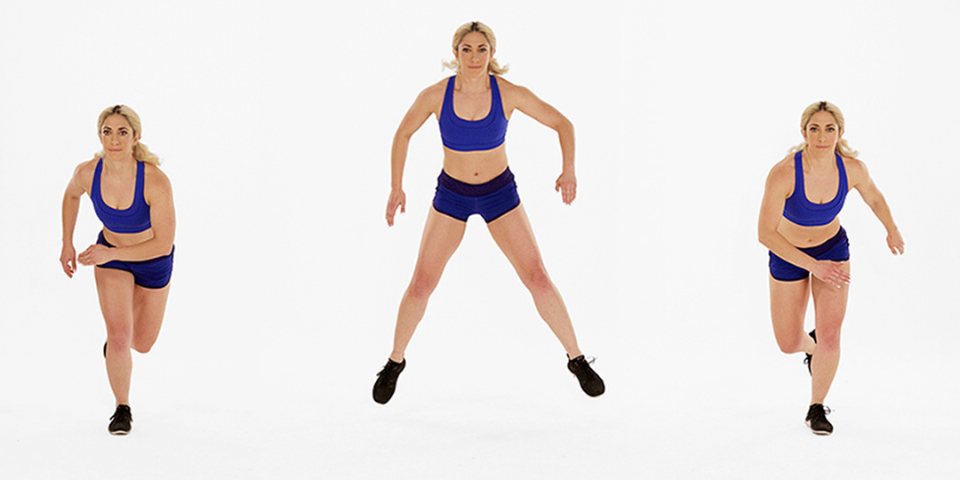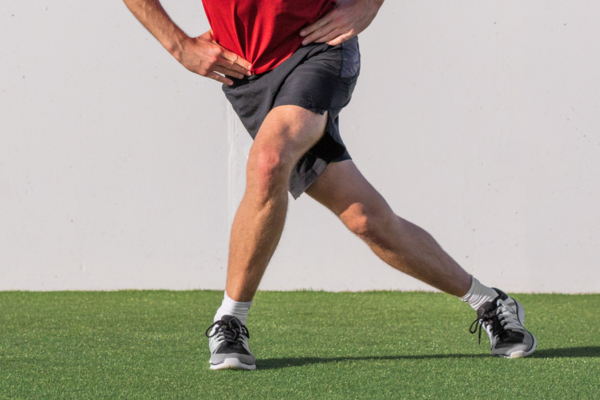
Skater jumps — also known as skater hops, side skaters, and skater steps — are like the burpee version of side lunges, making them a staple move in many high-intensity interval training (HIIT) workouts.
As a plyometric exercise, skater jumps are a great cardio- and strength-building move; perform just a few reps and you’ll experience a quick boost in heart rate and feel your muscles lighting on fire.
Here’s how to do skater jumps the right way.
Skater Jumps: Step-by-Step Instructions
- Standing with your feet about hip-width apart, shift your weight onto your left leg, bending your left knee to lower your hips a few inches while raising your right foot off the ground.
- Bound to your right by pushing off with your left leg.
- Land softly on your right foot, allowing your left leg to cross behind you and your arms to swing across your body in the same direction.
- Pause, and then repeat the movement, this time pushing off with your right leg and landing on your left leg.
- Continue jumping back and forth.
How to Make Skater Jumps Easier
Make skater hops easier with these modifications until you feel comfortable taking things up a notch.
- Shorten your jump distance.
- Slow down your tempo.
- Take out the jump and perform lateral lunges.
How to Make Skater Jumps Harder
If you’re looking to make skater jumps more challenging, implement one or more of these tips based on your level of fitness.
- Jump farther.
- Quicken your pace.
- Hold a light dumbbell in each hand.
- Tap the floor between reps.
Before you intensify skater hops, however, it’s important to maintain proper form — the side-to-side (frontal) plane is often neglected in standard strength-training moves. Learning to land, stabilize, and accelerate out of the frontal plane is key for preventing injury with this movement.
What Muscles Do Skater Jumps Work?

Skater jumps target the muscles in your lower body:
Skater hops also offer the added benefit of strengthening each side of your body separately, helping you build balance between your dominant and non-dominant side. And thanks to the single-leg component, you’ll develop greater coordination.







